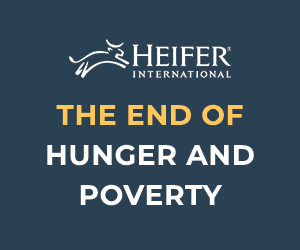



New Insights On Reproductive Management Of Beef Cattle
US - Pounds of calf weaned per breeding female is one of the most important variables affecting profitability in a beef cow/calf operation, writes Allen Bridges from the University of Minnesota Extension.
The reason is simple: beef producers market total pounds produced and have the expense of maintaining cows. The more cows that have a calf, the more pounds of beef can be marketed.
Producers need to optimise reproductive efficiency in their beef herds to maximise profitability. While many factors, such as nutrition, genetics and herd health impact reproductive performance of a beef herd, reproductive management tools such as estrous synchronization and artificial insemination (AI) can greatly assist.
By itself, AI offers numerous advantages to producers: the use of genetically superior sires, specific mating and crossbreeding, selection of desirable and marketable production traits, and improved herd health. Likewise, a couple of the advantages of using estrous synchronization are more condensed breeding and calving periods and increased calf uniformity and weight. Combining the benefits of estrous synchronization and AI provides a mechanism to improve reproductive efficiency and profitability of a beef operation.
University of Minnesota Extension and North Central Research and Outreach Center specialists have been investigating a wide variety of estrous synchronization protocols in beef cows and heifers. Their focus has been on the development of protocols that facilitate the mass breeding of all female beef cattle at a predetermined time (fixed time-AI) rather than based on detection of standing heat. Fixed time-AI programmes reduce the time and labour involved, do not require heat detection, allow all female cattle to be managed in a group rather than individually, and ensure that all females are given the opportunity to conceive to AI (not all will exhibit heat with estrous detection).
To enhance these protocols we have been trying to identify what factors limit fertility and determine how synchronization approaches can be designed to avoid such pitfalls. Areas of focus include: how to control the growth of ovarian follicles (structures containing the ovum), how the hormonal environment during estrous synchronization may affect the viability of the ovum (egg) that is ovulated, and how other factors such as animal nutrition contribute to pregnancy success.
Our goal is to gain a greater understanding of the factors affecting female fertility and thus enhance reproductive efficiency in beef cattle by increasing the number of cows that conceive to estrous synchronization and AI.







